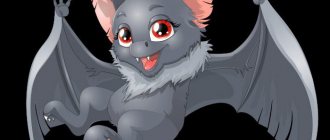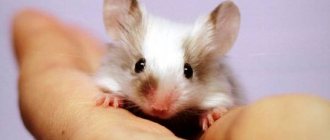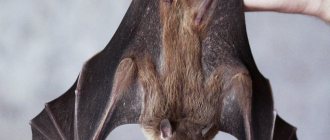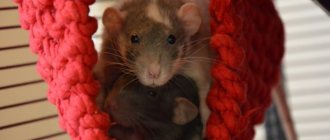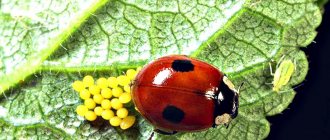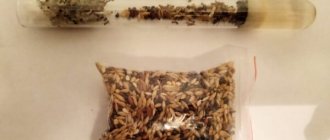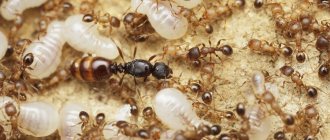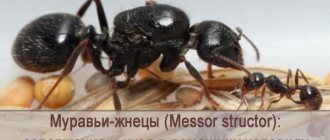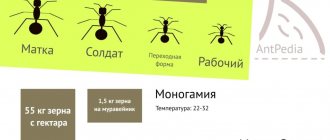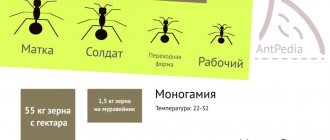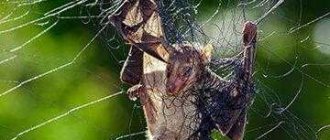Old fairy tales firmly connect the image of bats with evil spirits. These unusual animals were sure to live near a lonely hut on the edge of the forest. Witches used them for their potions, and they could even set them on an unwanted traveler. And then these monsters drank every drop of a person’s blood.
Where this opinion came from, whether it was based on fear of their nocturnal lifestyle and unusual appearance, is no longer clear. But even now, when it is known that they feed mainly on insects and fruits and even vampire mice do not attack humans, many people still do not like them.
Bat food
It is impossible to give a definite universal answer to the question of what a bat eats. It depends on the species to which the animal belongs, and about 700 of them are now known. Everyone has their own taste preferences.
Insectivores
Most bats are insectivores, but this does not mean that they are ready to eat all the bugs and worms in a row. Each species chooses its own. Some people hunt only moths and butterflies, others prefer mosquitoes and mosquitoes, and for some there is nothing tastier than wood larvae. Even the methods of catching prey are different. There are some species that swallow food on the fly; some species make a kind of net from their wings or tail membrane and catch the prey in it.
Insectivore
Bats living in Russia feed mainly on insects:
- The genus of bats is one of the most numerous. On the territory of the former USSR there are pond bats, water bats, Natterer's bats and baleen bats. Their diet consists of butterflies, beetles, mosquitoes, and flies.
- Long-eared bats can be easily distinguished from other representatives of bats by their huge ears, rounded at the tips. In food, the long-eared bat gives preference to insects that do not have a chitinous shell - cutworms and moths.
- The dwarf pipistrelle is one of the smallest bats in our country. It has been noticed that in the places where they live, the number of mosquitoes and midges is noticeably lower than usual. No wonder these insects are their favorite delicacy.
- In cities you can most often meet representatives of the Kozhan family. They live in attics and balconies. They feed on crepuscular and nocturnal insects.
Carnivores
Among bats there are also predators that are distinguished by sharp teeth. These bats eat lizards, voles, frogs, and are unlikely to refuse small birds. The animal rushes from above at prey moving on the ground, presses it with its body and, as it were, hugs it with its wings. It turns out to be a kind of network from which the victim can no longer escape.
The most famous species of bat found in Russia, whose diet consists of rodents and amphibians, is the giant noctule. But if you fail to catch a bird or a vole, this representative of bats may well dine on large insects: rhinoceros beetle, longhorned beetle, and beetle.
Fish hunters
Among bats there are also those who prefer a fish diet. The greater and lesser harelips live in South and Central America. Their favorite habitats are near lakes. They catch prey with their hind legs, reacting to water vibrations created by fish swimming to the surface. A special feature of the great harelip is that, unlike its fellows, it can hunt during the daytime.
Vegetarians
Among the animals there are also those that feed on nectar and fruits. True, there are very few of them. Basically, vegetarianism is preferred by fruit bats, which, although they belong to bats, are different from other bats.
The muzzle of mice that prefer nuts, fruits and nectar is extended forward, the tongue is noticeably longer than that of their relatives, and the teeth are in their infancy. The most famous member of the fruit eaters is the white leaf-eater, native to Central and South America.
This is the animal that is most often kept at home. White fur with a bright yellow nose and ears give the animal a unique appearance.
Vampires
Myths about vampire bats originated in ancient Europe, but real animals that drink the blood of animals live only in America. There are only 3 types:
- ordinary vampire;
- hairy;
- white-winged.
White-winged vampire
The ability to echolocation in representatives of this species is poorly developed. When going on night hunts, they rely more on their sense of smell and hearing. Having discovered prey, the animal uses thermoreceptors on its nose to find the place where the animal’s vessel is closest to the skin. Having moistened the selected point on the victim’s body with saliva, which has analgesic properties, the vampire makes a small wound. Anticoagulants prevent blood from clotting until the meal is finished.
A bat does not need much blood to feed, so even in the wild their victims do not die from blood loss. But these animals are carriers of dangerous diseases. There are known cases where entire herds of livestock became infected due to mouse bites.
Vampires
There are very few blood-eating bats in the world—only three species. Common, bushy-legged and white-winged vampires.
Important: These bloodsuckers do not drink human blood. The maximum they are capable of is to bite a person in self-defense.
The entire body structure of these bats is adapted to their nutrition.
They have a short nose with infrared receptors, very large incisors and grooves on the lower jaw through which blood flows.
Important: Vampires are the only bats capable of moving on land. Having found the victim using ultrasound, the bloodsucker approaches it on the ground, uses its receptors to calculate the best place to bite and attacks.
These animals do not suck blood, but lap it up . Vampires' saliva contains a special enzyme that prevents the victim's blood from clotting. Bats cannot drink large amounts of blood, so this factor should not be scary. But they are carriers of dangerous diseases that can be transmitted to livestock, which they love very much, or to humans.
Bats are some of the most amazing creatures on the planet. They are the only mammals capable of flight, each species has special social relationships, and all mice are very caring towards children and members of the colony.
Bats are the only mammal that naturally can fly. There are more than 700 known species of bats, most of which are insectivores. To survive the cold season, without having a food supply, these winged animals effectively adapt to the conditions of their environment. How and where they winter - read in our materials.
How does a bat drink?
This question naturally arises among those who have observed these mammals. And all because of the unusual ways they use to get drunk.
Some species manage to descend to the surface of the water at high speed so that they can only capture a few droplets with their mouths, leaving their fur coat dry. To do this, they use echolocation, which helps determine the exact distance to the surface of the reservoir.
Sometimes you can see how the animals quickly, quickly flap their wings over the water, raising a fan of splashes, catching droplets with their mouths in flight. There are also those who prefer to wet the skin and then lick it.
During the night, the animal drinks water several times, as it is vital for it.
Age from 0 to 20 days
Temperature
Such an animal needs to be warmed. Maintain a constant temperature of about 37 degrees. Thermal mats for animals or just a stable bottle of warm water wrapped in a towel (or sock) are suitable for this. But don't overheat!
Nutrition
Very young mice are fed goat's milk or a special milk formula for puppies (can be found in pet stores), which is prepared according to the recipe indicated on the package. Cow's milk is not nutritious enough for baby bats, and they will not be able to fully develop on it. The same applies to milk formulas for baby food - the animal lags behind in development.
It is very important that the milk is fresh, boiled, and the mixture is prepared immediately before feeding. Do not leave the prepared formula until the next feeding. Do not add eggs or other ingredients to milk or formula - there is a high risk of intestinal infection and death. It is also undesirable to change one milk to another. Equipment must be thoroughly washed, sterilized or boiled.
Vitamin and mineral supplements are often necessary, especially if you are feeding milk rather than formula. Look in your pet stores for vitamin-mineral complexes for birds without gastroliths (sand, pebbles, etc.). The dosage will depend on the chosen complex. This question needs to be clarified individually with our specialists.
Feeding mode
Babies are fed every 2-3 hours both day and night. Adults - every 3-4 hours. If the animal did not have time to digest the previous portion, and this is noticeable by the enlarged tummy, increase the interval between feedings.
When feeding, hold the animal so that the head is slightly lower than the body. Then spilled milk will not stain the body. Feed the animal slowly.
With age, the interval between feedings increases.
Amount of food
Cubs of different species and even different ages can differ significantly in weight, which is why they require different amounts of food. For this reason, we cannot clearly say how much your baby bat should eat.
If you know its weight, you can use the formula to calculate the approximate portion of food: weight of the animal in grams * 0.05 ml. So, per serving for a 10-gram animal you will need 10 g * 0.05 ml = 0.5 ml of milk or mixture. We emphasize that this is an approximate portion, everything is individual. If the animal eats with gusto and then starts to turn away, it means it’s full, don’t be upset.
It is convenient to track the portion of food eaten using a scale on the syringe. It is very important not to overfeed the animal . Babies often cannot cope with large amounts of food, and bloating begins, which often ends in death. Therefore, feed the animal in small portions, but often. In 1-2 days of observation, you will select suitable portions and feeding regimen for him.
Feeding a house bat
Bats at home are forced to eat whatever their owner offers them. It must be remembered that the pet’s diet should be close to natural. You cannot feed them with leftovers from the common table. Suitable for insectivores:
- mealworms;
- Zophobas;
- crickets;
- cockroaches;
- Khrushchi;
- vitamin milkshake.
For exotic species of flyers that prefer plant foods, they will need fruits that are familiar to them.
General Content Rules
It is convenient to keep a baby bat in a box or box with access to air and natural light (but not direct sunlight). Ordinary cages are often not suitable, since the animal can crawl between the twigs. It’s a good idea to place and hang pieces of fabric in the shelter so that the animal can hide in them. If you don’t find a convenient box, then a small fabric bag will do.
The animal must be kept out of the reach of pets and children!
Bats often have ectoparasites - ticks, fleas, etc. They are not dangerous for humans and domestic animals. If the animal is weak, does not wash itself or is heavily infected, it is necessary to help it get rid of parasites. They can be removed with tweezers or a damp cotton swab. If you see the need for treatment with special means, contact us for further consultation.
Age: more than 20 days
With normal nutrition at this age, the cub is already covered with hair and has teeth. They are still smaller than those of adult bats, but sufficient to chew solid food, namely insects.
Temperature
A 24-hour heating pad is not needed. Warming is only necessary after feeding. The cub learns to regulate its body temperature - it cools down when it sleeps and warms up when it wakes up. Before feeding, you need to give the animal time to warm up. When warming up, the bat “shivers” with its whole body.
Nutrition
If your bat's teeth have grown enough to chew solid food, it's time to start feeding insects. Mealworm larvae are best suited for this. Complementary foods are gradually introduced into the animal's diet. That is, the main food is still milk or formula.
The first evening of complementary feeding - let you try the pomace (entrails) of the mealworm, no more than half of the insect, a couple of bites. Most likely, the animal will not understand that you are offering it food, since it has not encountered insects before. You will have to tear off the insect’s head and apply some of the insides to the “lips” of the animal. When he licks them, slip him some more pomace. Afterwards you give him some food that is familiar to him - milk or formula. Do not leave the animal unattended, since mealworms are a new food for the intestines, the animal is just learning to digest it, and there is a risk of tummy problems. Watch the stool and the behavior of the animal. Subsequent feedings are milk feedings, as usual.
The next evening, offer the baby bat a slightly larger portion of mealworm innards. And so over the course of several days you increase the portion of the pomace. When the animal begins to eat them willingly and digest them without problems, let him gnaw on the chitin of the mealy beetle, just a little. Again, he doesn’t know how to chew yet, so he will do it clumsily. Supplement with entrails or milk, and then again observe how the intestines react to new, more solid food. In the future, allow the animal to eat larger and larger pieces of mealworms.
In this way, you will gradually teach the baby bat to eat and digest insects. Once he has successfully eaten and digested the mealworms, you can gradually increase the amount of mealworms in the diet while decreasing the amount of milk or formula. Often these are evening and night feedings with insects, and morning and afternoon feedings with milk or formula.
Don't forget about vitamin and mineral complexes. A growing animal needs them every 2-3 days. The dosage is individual and depends on the complex itself and the weight of the bat. Contact our specialists.
If you picked the animal at 3 weeks of age, has good teeth, but does not yet fly, feed it with milk or formula for 2-3 days, as described for mice aged 0 to 20 days. Only when the animal is able to digest dairy food normally, start feeding with insects, as described in this section.
